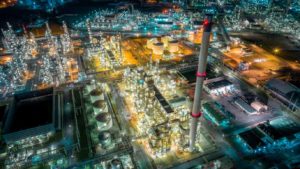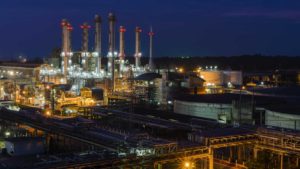Why your first hires and earliest investment should be laser-focused on identifying and mitigating critical risk
The defining characteristic of a megaproject is its staggering complexity. These projects cost at least $1 Billion to build and involve multiple stakeholders across both the public and private sectors — a simple fact that introduces astonishing financial, legal and organizational complexity from the project’s very inception. Design and construction efforts often span many years and even decades, involving hundreds or thousands of contractors and subcontractors — a tremendous feat of organizational logistics and communications.
All of this before we even consider the breathtaking complexity of the installations themselves: from dams and bridges to wind farms and petrochemical projects, these are humankind’s most ambitious construction projects.
People are your best bulwark against failure
Oxford University business professor Bent Flyvbjerg has said that roughly eight percent of total global GDP is presently committed to megaprojects, putting us in the middle of the biggest infrastructure investment boom in human history. But he also warns that the “iron law of megaprojects” is still very much in effect — over budget, over time, over and over again.
There are many reasons for megaprojects’ failure, but we’re going to focus on just one: people. IPA estimates that turnover of key personnel on standard capital projects can trigger project cost overruns of up to five percent; if this pattern holds on a multi-billion dollar megaproject, the impact of turnover would register in the multi-millions of dollars. On the surface, this statistic teaches us to have strong retention policies in our Human Resources department, but taken more broadly, it speaks to a critical but often overlooked point: the people you hire first are essential to the success of your megaproject
Put another way, the people you hire first are one of the most powerful bulwarks against failure. On a megaproject, stakeholder companies typically start from scratch and put together a team of hundreds of people in less than two years. This team must be capable of meeting the most important objectives of an early-stage megaproject, and how we frame those objectives is critical to the success or failure of a modern megaproject. We propose that the most important work of early-stage megaprojects is risk mitigation and that only the right people can effectively mitigate against risk.
Applying a risk-mitigation paradigm to early hiring
Applying a risk mitigation paradigm to the organizational design of new megaprojects acknowledges that these are not just technical feats of engineering and construction. The fact is that most megaprojects are related to natural resources or infrastructure and have to clear regulatory, environmental and political hurdles as well. These hurdles are as risky — and as predictable — as the engineering and construction hurdles. What if your first year of hires was singularly focused on identifying and mitigating risk across all aspects of the project?
The lens through which we view early hiring is important. Why? Because we know that organizational structure is the Achilles heel of most megaprojects; it’s well-documented in the literature and anyone who has worked on a megaproject knows it to be true. Part of the problem is that the mega project organization is typically borne of funding partners, and thus inherits the culture and habits of stakeholders. But megaprojects are fundamentally different from their funding partners — they are less like established corporate behemoths and much more like startups. They need to be nimble and driven with a singular focus, or they’ll quickly become bogged down. We need a new paradigm.
How to prioritize staffing on closing early risks
Simply put, start by staffing the core megaproject team around major risks. These will vary based on the project, but are likely to revolve around:
-
Technical data and basic engineering data;
-
Environmental, political and social data, including permits and land acquisition;
-
Financial and market risks, including solid market analysis, permits links to selling, etc.;
-
Clarifying stakeholder rules of engagement such as JV partners.
Securing permits, collecting basic engineering data, building strong financials and clarifying rules of engagement for both financial and execution partners — these are areas of high importance as you get started on a megaproject.
The idea is to staff the core project team so members can work collaboratively toward closing the gap in these major risk areas. Then, as the project moves through initial stage gates, continue to build staffing around these core areas.
The result is an independent, nimble organization that is free to focus on the most critical work required to bring the megaproject to maturity – risk mitigation.





